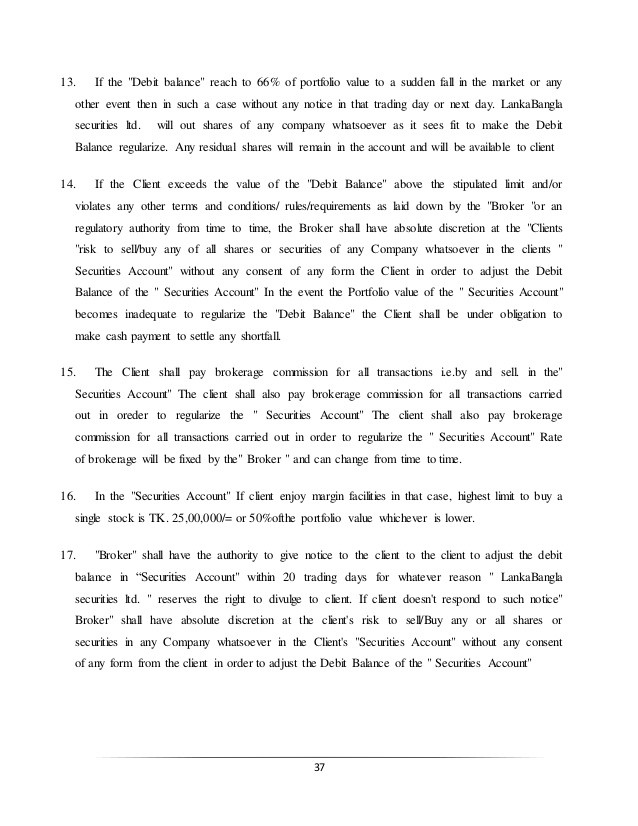Spreading The Word About Portfolio Margin_2
Post on: 26 Июнь, 2015 No Comment

Are Overbought-Oversold Indicators Reliable Predictors of Short-Term Market Performance – a 100-Week Backtest
Thursday, March 12th, 2015
This week I would like to report on a study I recently made for Terry’s Tips paying subscribers. I checked out the validity of a popular way of predicting whether the short term market might be headed higher or lower. I think you will find that the results are astonishing.Terry
Are Overbought-Oversold Indicators Reliable Predictors of Short-Term Market Performance – a 100-Week Backtest
One of the most popular indicators in many analysts’ toolbox is the overbought-oversold numbers generated by the current RSI.
I have never figured out how to get reliable information from reading charts, although many people apparently find them useful. The same goes for the overbought-oversold indicators. On the other hand, I know that many people believe in these numbers, and every Saturday for over ten years, I have published these indicators for SPY, DIA, IWM, and QQQ for subscribers to my options newsletter, Terry’s Tips.
Each week, we average the 2-day, 3-day, and 5-day RSI numbers for these popular ETFs and used the following ranges to determine where the ETF stood at the close on Friday:
Very overbought an RSI reading of greater than or equal to 85.0
Overbought greater than or equal to 75.0
Neutral between 30.0 and 75.0
Oversold less than or equal to 30.0
Very oversold less than or equal to 20.0
Extremely oversold – less than or equal to 10.0
Last Friday, March 6, both SPY and DIA were “Very Oversold” and IWM and QQQ were “Oversold.” This prompted me to wonder what that might mean for the market this week. Were these numbers significant indicators or not, I wondered?
I went back and checked the results for the last 100 weeks from my Saturday Reports. Here are the numbers for SPY, perhaps the best measure of “the market:”
Neutral – 47 weeks
Overbought – 16 weeks
Very Overbought – 22 weeks
Oversold – 5 weeks
Very Oversold – 8 weeks
Extremely Oversold – 2 weeks
A little less than half the time (47%), the reading was neutral. In 38% of the weeks, SPY was overbought or very overbought, and in 15% of the weeks, it was in some sort of oversold condition.
I then checked out how SPY performed for the subsequent seven days. Here are the numbers showing what happened to SPY in the week following the condition reported in each Saturday Report:
overbought oversold chart march 2015
When SPY is overbought, the technicians would expect that the market would be weaker in the next week, but just the opposite was true. In fact, in 81% of the weeks when it was overbought, SPY rose in the subsequent week. It also went up in 64% of the weeks when it was very overbought.
Clearly, being overbought or very overbought is an absolutely worthless indicator of a lower market. In fact, in subsequent weeks, for the most part, the market outperformed. If the market rose by the average percentage when it started out either overbought or very overbought every week of the year, it would go up by over 61% for the year. In other words, being overbought or very overbought is an excellent chance to bet on a higher market for the next week (rather than the opposite).
The oversold condition is an entirely different story (based on the last 100 weeks). Being oversold or extremely oversold is essentially a meaningless indicator – the market rose or fell in just about the same number of weeks following one of those conditions. However, being very oversold seems to be an excellent indicator of a higher market. In 83% of the weeks when it was very oversold, it rose in the subsequent week. The average market gain in those weeks was 1.21% (62% annualized).
Another interesting result is that anytime SPY is anything except neutral, it is a decent indication that the market will move higher in the next week. Being very oversold is the best positive indicator, but being overbought is almost as good a positive indicator (even though this is absolutely contrary to what many technicians would expect).
Last Friday, SPY was very oversold. That occurs in only 8% of the weeks, and for the past 100 weeks, the market was higher 83% of the time in the subsequent week. As I write this before the market opened on Thursday, so far, SPY has dropped by exactly $3 (1.45%). This time around, it looks like even the historically most reliable indicator is not working as expected, either.
Bottom line, if you are trying to get a handle on the likely one-week performance of the market based on the overbought-oversold condition on Friday, you are bound to be disappointed. These indicators just don’t work, except possibly the very oversold indicator (and this week is a reminder that even this one is not always right, either). Maybe the results would be different if you checked on the one-day or two-day changes rather than the one-week variations, but that is something for someone else to check out.
An Oil Play Designed to Make 25% in One Month
Tuesday, March 3rd, 2015

Bernie Madoff attracted billions of dollars because he said he had a system that would generate gains of 12% a year. For many investors, 12% must seem like a pretty good return. Options investors think differently. They prefer to have at least some of their investment capital in something that could conceivably make a far greater return.Today I would like to discuss an investment I made this week in a demonstration (actual money on the line) portfolio for Terry’s Tips Insiders. It is designed to make about 25% in the next four weeks.
Terry
An Oil Play Designed to Make 25% in One Month
One of our favorite underlyings these days is USO, an ETP (Exchange Traded Product) which closely tracks the price of oil. If you have filled your car with gas lately, you know that the price of oil must have been trading lower over the recent past. In fact, it has. A barrel of oil has fallen from about $100 to $50, while USO has dropped from about $40 to about $18.
There are a couple of reasons to believe that the downward trend of USO might continue for a while longer. First, the way this ETP is designed, it suffers from contango (futures prices for further-out months are higher than the spot price of oil). At the current level of contango, if the price of oil remains the same, USO should lose about 21% of its value over the course of a year due to the influence of contango.
Second, some large investment banks (e.g. Citi) have come out and said that the price of oil is likely to fall in half once again before the current glut is eliminated and oil might start recovering in the third quarter.
With these two reasons suggesting that oil (and USO) might be headed lower, at least for the next month or so, we looked back at every calendar monthly change in USO for the recent past, and we learned that in the last 25 months, on only two occasions did USO fall by more than 15% in a single month, and only once did it rise by more than 5.6%.
If this historical pattern continues for the next month, the portfolio we set up has an 88% chance of making a gain, and the average gain over most of the possible stock prices is over 25%.
Here are the calendar spreads we placed in a portfolio that could be set up for no more than $2900 at today’s prices with USO trading about $18.45:
Buy to Open 8 USO Jan-16 16 puts (USO160115P16)
Sell to Open 8 USO Mar4-15 16 puts (USO150327P16) for a debit of $1.26 (buying a calendar)
Buy to Open 8 USO Jan-16 17 puts (USO160115P17)
Sell to Open 8 USO Mar4-15 17 puts (USO150327P17) for a debit of $1.42 (buying a calendar)
Buy to Open 4 USO Jan-16 18 puts (USO160115P18)
Sell to Open 4 USO Mar4-15 18 puts (USO150327P18) for a debit of $1.58 (buying a calendar)
Here is the risk profile graph for these spreads for March 27th when the short puts expire:














